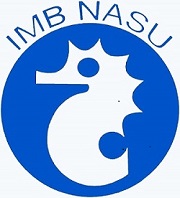STRUCTURAL AND MORPHOLOGICAL CHARACTERISTICS OF THE BOTTOM SETTLEMENTS OF MUSSELS IN THE COASTAL ECOSYSTEMS IN THE RIVER RUNOFF INFLUENCE ZONE OF THE UKRANIAN SHELF OF BLACK SEA
DOI:
https://doi.org/10.47143/1684-1557/2021.2.01Keywords:
mussels, bottom settlements, quantitative indices, size-mass and phenotypic structure, North-Western Black Sea, Odessa and Southern Bug regionsAbstract
The formation of the density, biomass, size-mass and phenotypic structure of the bottom populations of mussels Mytilus galloprovincialis (Lamarck, 1819) in three areas of the Ukrainian shelf of North-Western part of the Black Sea – near Adjiyask Cape (the water area near the Dnieper-South Bug region), near mouth of the Grigorievsky estuary and on the Odessa coast, with different gradients of salinity of sea waters due to influence of the transformation of the river runoff, were studied. The samples of mollusks were collected from surface of the seabed soil at a depth of 3.0 meters in the spring (March–April), summer (June–July) and autumn (October–November) 2016–2019. In addition to the number, biomass, size and phenotypic structure, the ratios of the individual components of the mollusk mass (wet and dry mass of the animal’s soft body and mass of its valves) were also studied.
It is noted that the greatest salinity stratification of the water column, caused by the influence of fresh river runoff, was observed near Adjiyask Cape, where the salinity of the surface water layer (depth 0.5 m) in spring and early summer did not exceed 8.4±2.4 and 11.0±2.5 ppm, respectively. Nevertheless, bottom settlements of mussels in this and in two other seawater areas were relatively in favorable conditions, as the salinity at the depth of its habitat (depth 3.0 m) remained within 12–15 ppm, which corresponds to the “river–sea” ecotone.
Based on the data obtained, it is concluded that such halo-tolerant mollusks as the Black Sea mussels in coastal areas affected by fresh river runoff can only slightly differ in their number and biomass indices, as well as in the phenotypic structure of settlements. As a rule, differences may be related exclusively to the individual morphological characteristics of animals, especially for its soft body weight (wet and dry mass) and mass of its valves.
References
Адобовский В.В., Доценко С.А., Михаленко Ю.Е. Особенности термохалинной изменчивости вод в прибрежной зоне Одесского региона. Экологическая безопасность прибрежных и шельфовых зон Черного моря. 2000. Т. 2. С. 127–135.
Варигин О.Ю. Вплив річкового стоку і зміни солоності на склад прибережного угрупування обростання північно-західної частини Чорного моря. Гідробіологічний журнал. 2020. Вип. 56. № 5. С. 19–27.
Говорин И.А., Шацилло Е.И. Перифитонные поселения мидий Mytilus galloprovincialis (Lamarck, 1819) и митилястера Mytilaster lineatus (Gmelin, 1791) в условиях аномально высокой температуры прибрежных морских вод. Ruthenica. 2012. Т. 22. № 2.С. 101–110.
Шурова Н.М. Структурно-функциональная организация популяции мидий Mytilus galloprovincialis Черного моря. Киев : Наукова думка, 2013. 207 с.
Шурова Н.М., Золотарев В.Н. Анализ фенотипической структуры поселений мидий Черного моря по окраске наружного призматического слоя раковины. Морской экологический журнал. 2008. Т. 7. № 4. С. 88–97.
Govorin I.A. The Mass-Dimension Relationships in the Mussels Mytilus galloprovincialis (Mollusca, Bivalvia) from Different Phenotypical Groups in Periphyton Populations near Odessa Coast, the North-Western Part of Black Sea. Vestnik zoologii. 2016. Vol. 50. No. 3. P. 275–278.







